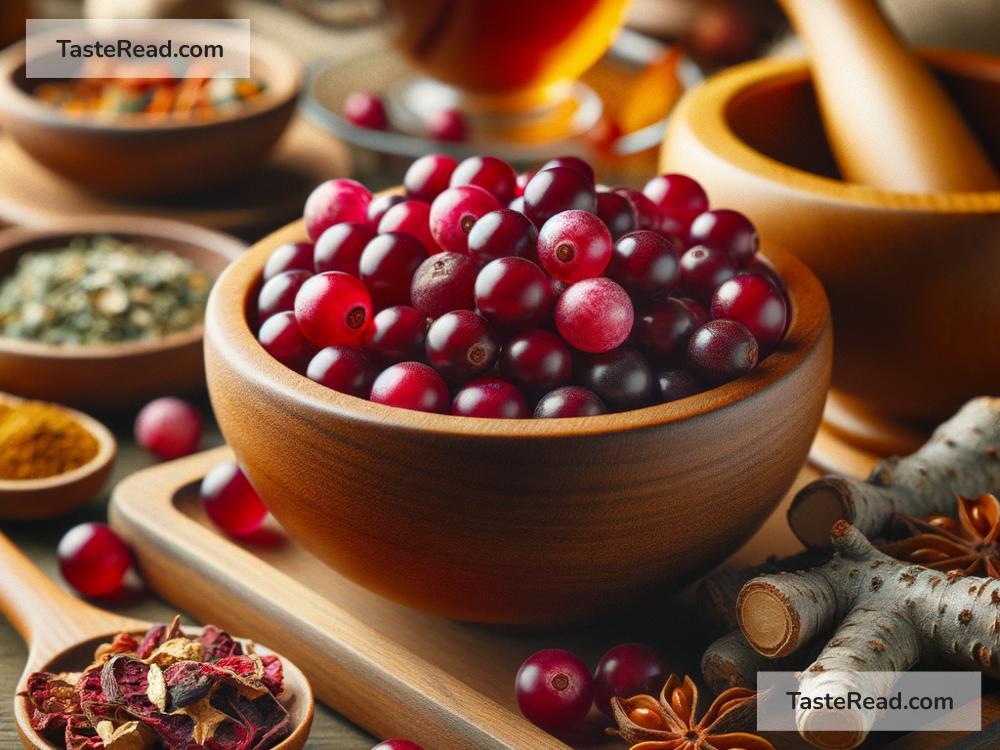Why Cranberries Are Used in Traditional Medicine
Cranberries are small, bright red berries that have been used in traditional medicine for centuries. Native to North America, these tangy fruits were once a staple in Native American diets and health remedies. Today, cranberries are still popular, not just for their delicious taste but also for their incredible health benefits. Let’s explore why cranberries have earned their place in traditional medicine and continue to be used around the world.
Nature’s Little Powerhouses
Cranberries might look small, but they are packed with nutrients and compounds that make them powerful. These berries contain vitamins like Vitamin C, Vitamin E, and Vitamin K, as well as minerals such as manganese and copper. Cranberries are also rich in antioxidants—substances that help protect the body from damage caused by harmful molecules called free radicals. These nutrients work together to boost overall health.
The fruit’s unique properties come largely from a group of compounds called proanthocyanidins (PACs). Proanthocyanidins are a type of antioxidant found in cranberries that play a big role in preventing certain health problems. This is one of the key reasons why cranberries have been valued in traditional medicine for so long.
Cranberries and Urinary Health
One of the best-known benefits of cranberries is their ability to prevent urinary tract infections (UTIs). UTIs happen when bacteria, especially E. coli, find their way into the urinary tract and cause pain, burning, and other uncomfortable symptoms. Cranberries have a special ability to stop these bacteria from sticking to the walls of the urinary tract. Instead of staying put and causing trouble, the bacteria are flushed out of the body.
In the past, people used cranberry juice or dried cranberries to keep their urinary systems healthy. Today, research supports this practice, showing that cranberries can reduce the risk of UTIs, particularly in women who are more prone to them. While cranberries may not cure UTIs, they are helpful for preventing them and maintaining urinary health.
A Natural Immune Booster
Cranberries are also known for supporting the immune system. Their high vitamin C content makes them excellent for fighting off colds, flu, and other illnesses. Vitamin C is a well-known immune booster that helps the body defend itself against germs.
In addition to Vitamin C, cranberries contain other antioxidants that help reduce inflammation. Chronic inflammation has been linked to a variety of health problems, including heart disease, diabetes, and arthritis. By eating cranberries, people can reduce inflammation in the body and stay healthier overall. Traditional medicine often used cranberries to treat fevers, wounds, and infections because of their immune-boosting properties.
Promoting Heart Health
Another area where cranberries shine is heart health. Traditional medicine practitioners noticed that people who ate cranberries regularly seemed to have healthier hearts. Today, we know that cranberries can positively affect blood pressure, cholesterol levels, and blood circulation.
The antioxidants in cranberries help to protect the heart and blood vessels from damage. They can reduce “bad” cholesterol (LDL) while increasing “good” cholesterol (HDL). Blood pressure may also improve because cranberries help relax blood vessels, making it easier for blood to flow. These benefits are why cranberries are often included in discussions about heart-friendly foods.
Digestive Benefits
Cranberries can also benefit the digestive system. Traditional medicine often used cranberries to help people with stomach issues. The fruit contains compounds that support gut health by encouraging the growth of good bacteria while discouraging harmful bacteria.
Cranberries also have fiber, which is essential for a healthy digestive system. Fiber helps keep the bowels moving and can prevent issues like constipation. Indigenous peoples often consumed cranberries to maintain their digestive health and ensure their bodies stayed strong.
Skin Health and Anti-Aging
Cranberries are not only great for inner health but also for the skin. Traditional medicine sometimes used cranberries to treat skin problems, such as cuts or burns. The antioxidants and Vitamin C in cranberries promote healing and protect the skin from damage caused by pollution or sunlight.
These same nutrients can fight signs of aging. Free radicals in the body are responsible for wrinkles and sagging skin, but the antioxidants in cranberries can slow this process down. Today, cranberry extracts are even used in skincare products for their rejuvenating properties.
A Long History of Healing
Cranberries were a valuable resource for Native Americans, who used them not just as food but also as medicine. They turned cranberries into poultices to treat wounds and combined them with other plants to fight infections. Early European settlers also adopted these practices, appreciating the berry’s usefulness.
In modern times, research continues to uphold the benefits that traditional medicine discovered long ago. Cranberries are now available in many forms, including fresh berries, juice, supplements, and extracts. No matter how you consume them, their health benefits remain impressive.
Final Thoughts
Cranberries are a small fruit with big benefits. From preventing urinary tract infections to supporting the immune system, heart, and digestion, these berries have proven to be a staple in traditional medicine for good reason. Their rich nutrients and antioxidants make them a natural remedy that people can rely on for better health.
Whether you enjoy them in a sauce, drink them in juice, or take them as supplements, cranberries are a simple and effective way to maintain your wellness. It’s no wonder they’ve been cherished for generations—and will likely remain a part of natural medicine for years to come.


